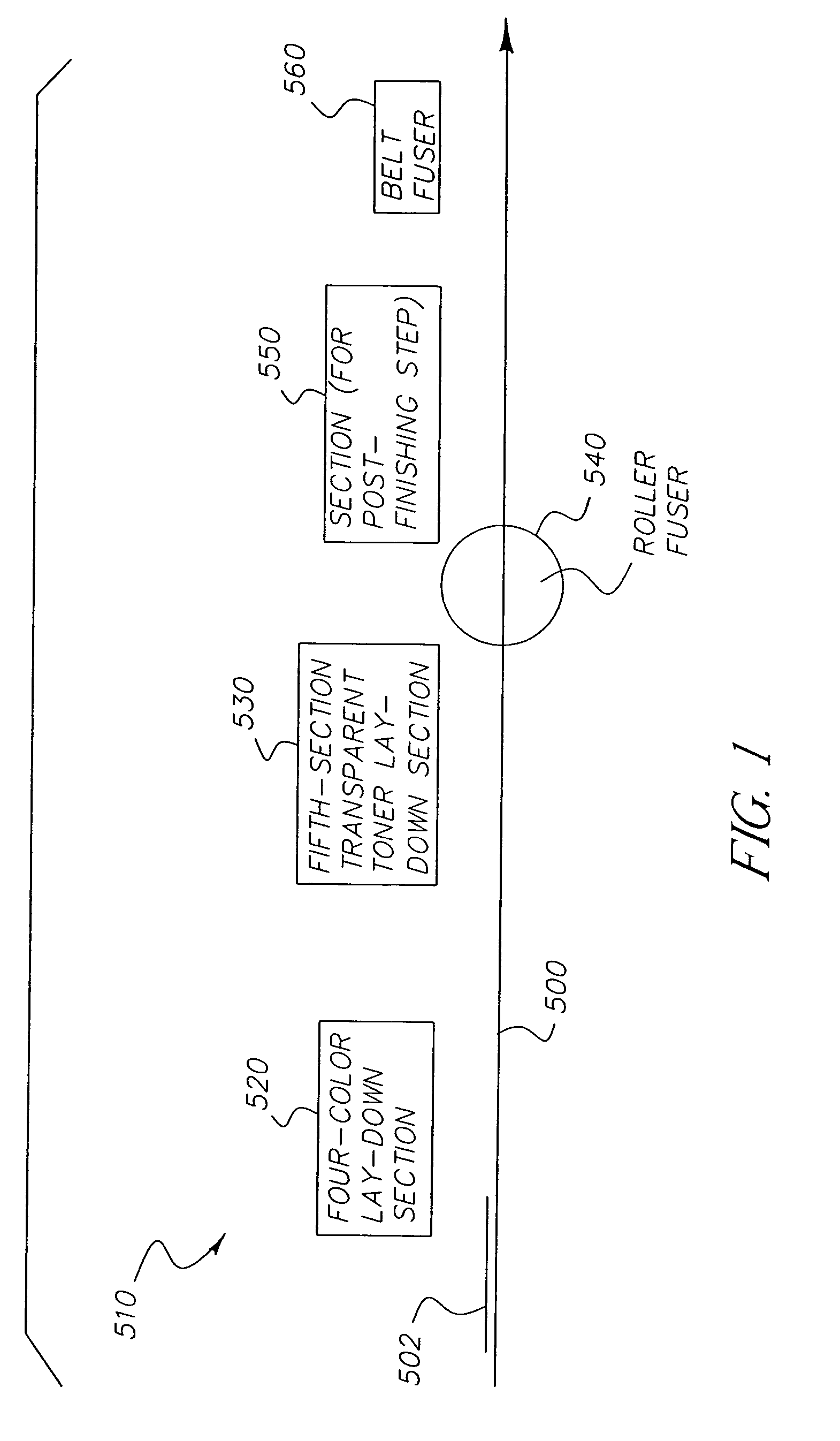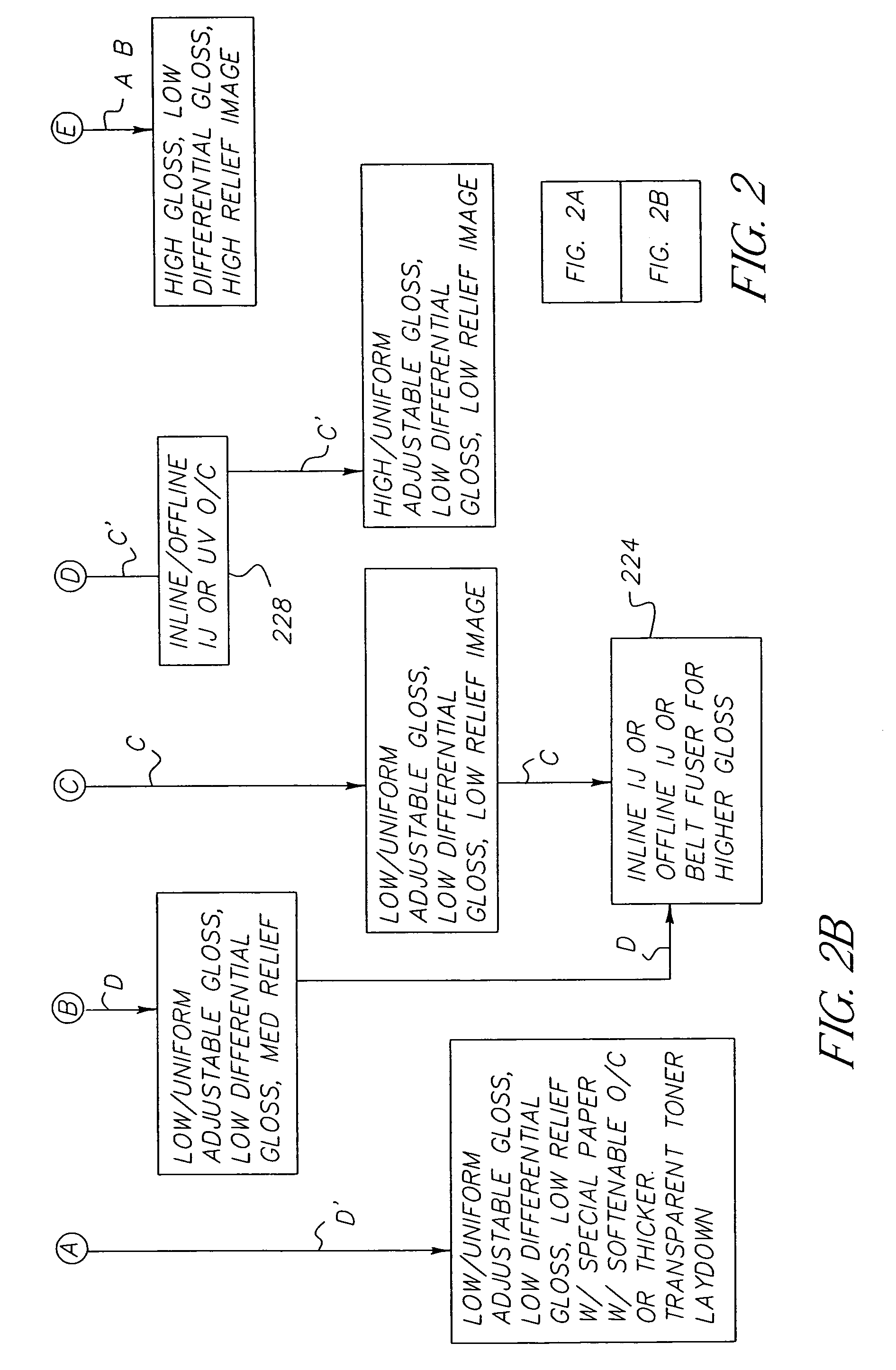Gloss and differential gloss control methodology
a technology of differential gloss and control methodology, applied in the direction of electrographic process apparatus, instruments, coatings, etc., can solve problems such as problems relating to image relief differences, too much total toner coverage on the media may stress the fusing subsystem, and the reliability of the fuser roller oiler may become problematic, so as to reduce differential gloss and relief, maintain flexibility in media selection, and improve the reliability and lifespan of the fuser
- Summary
- Abstract
- Description
- Claims
- Application Information
AI Technical Summary
Benefits of technology
Problems solved by technology
Method used
Image
Examples
examples
[0041]Referring to FIG. 5, there is shown a graph illustrating gloss uniformity when applying the negative mask method according to the present invention. The x-axis of the graph represents various color patches of a printed image, having varying percentages of color lay-down. The y-axis shows the gloss value. For these experiments, a glossy coated paper was used (Lustro Gloss 118) and two different transparent toner negative mask models were used to obtain a maximum gloss of 40 (square-indicated graph) and a maximum gloss of 50 (triangle-indicated graph). The results show that, with no transparent toner negative mask, the gloss value varied from about 20 to about 40 (a differential gloss of about 20). Using the negative mask model of the present invention, the gloss varied from about 35 to about 40 with the NMaxG40 negative mask model and from about 35 to about 50 with the NMaxG50 negative mask model. As can be seen, lower differential gloss and high overall gloss may be achieved b...
PUM
| Property | Measurement | Unit |
|---|---|---|
| thickness | aaaaa | aaaaa |
| gloss | aaaaa | aaaaa |
| differential gloss | aaaaa | aaaaa |
Abstract
Description
Claims
Application Information
 Login to View More
Login to View More - R&D
- Intellectual Property
- Life Sciences
- Materials
- Tech Scout
- Unparalleled Data Quality
- Higher Quality Content
- 60% Fewer Hallucinations
Browse by: Latest US Patents, China's latest patents, Technical Efficacy Thesaurus, Application Domain, Technology Topic, Popular Technical Reports.
© 2025 PatSnap. All rights reserved.Legal|Privacy policy|Modern Slavery Act Transparency Statement|Sitemap|About US| Contact US: help@patsnap.com



